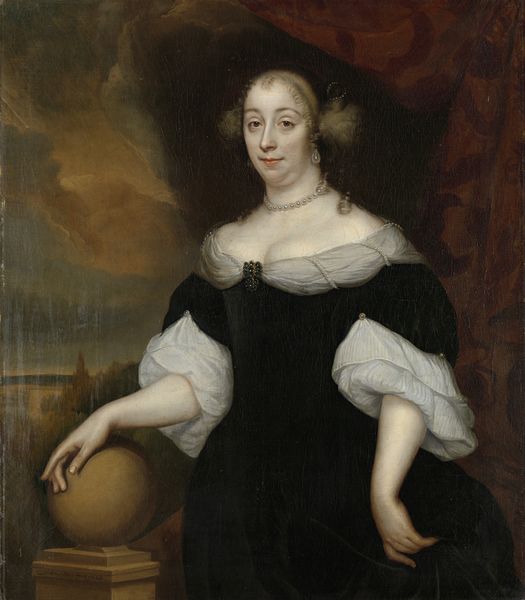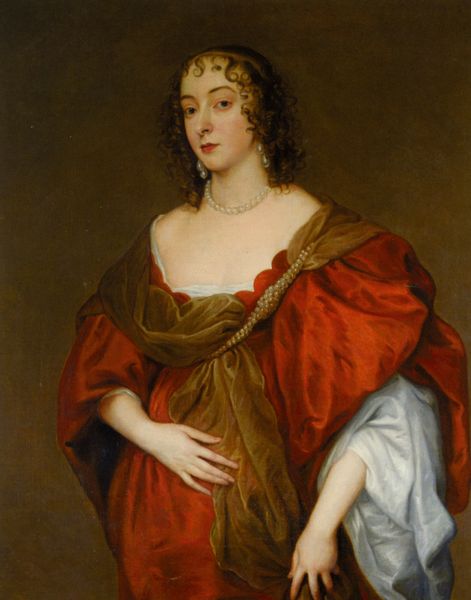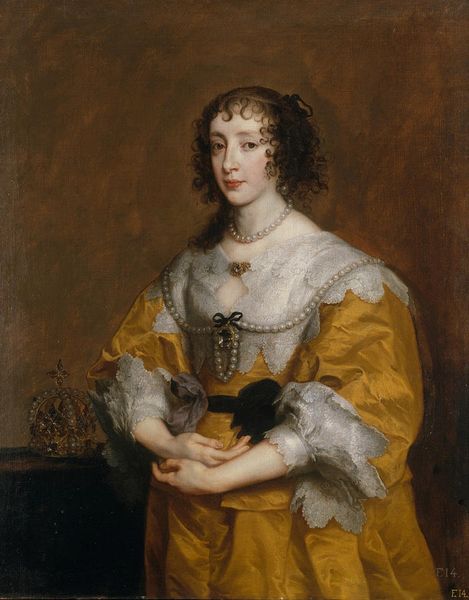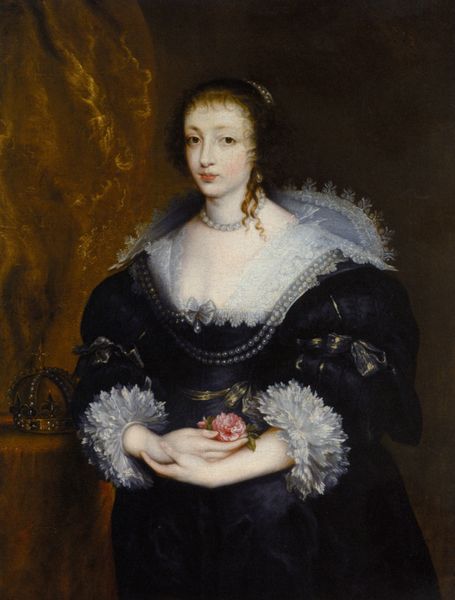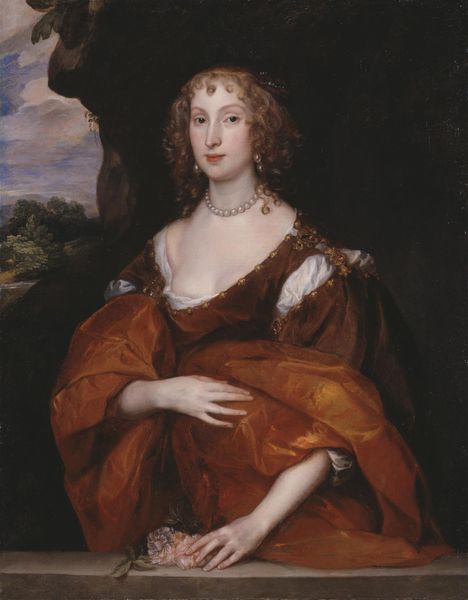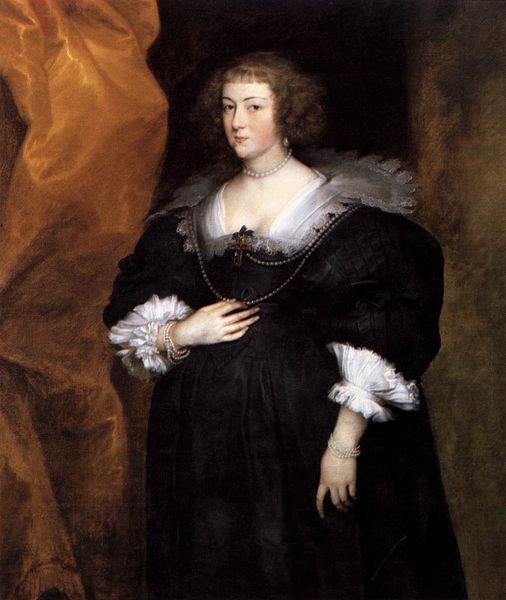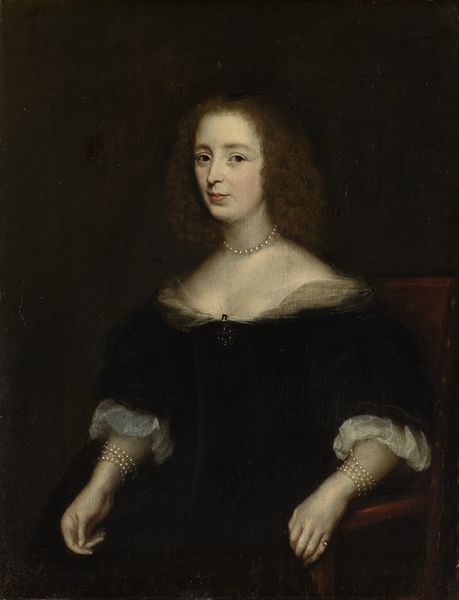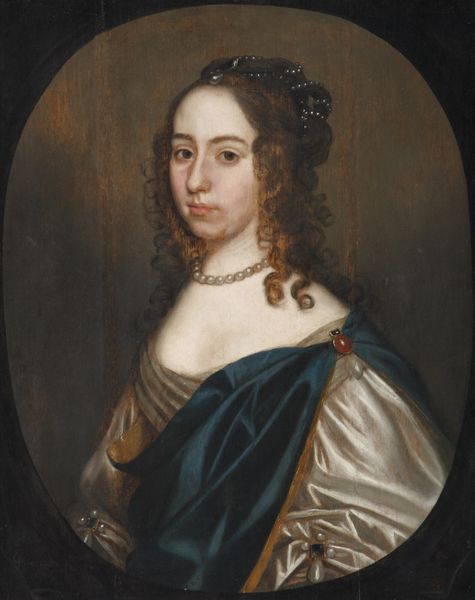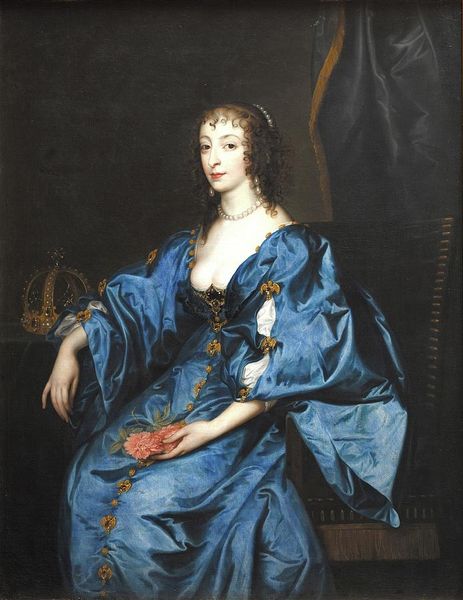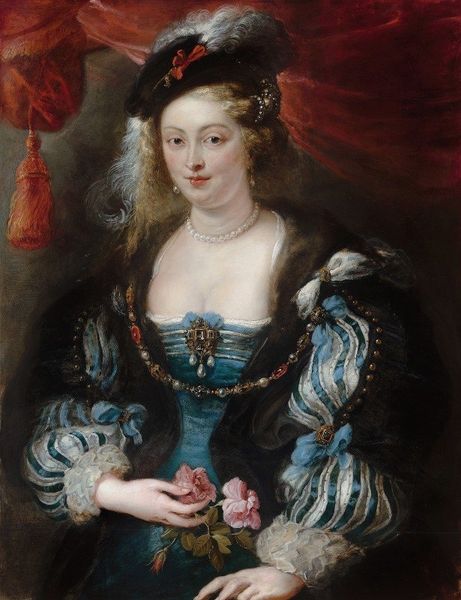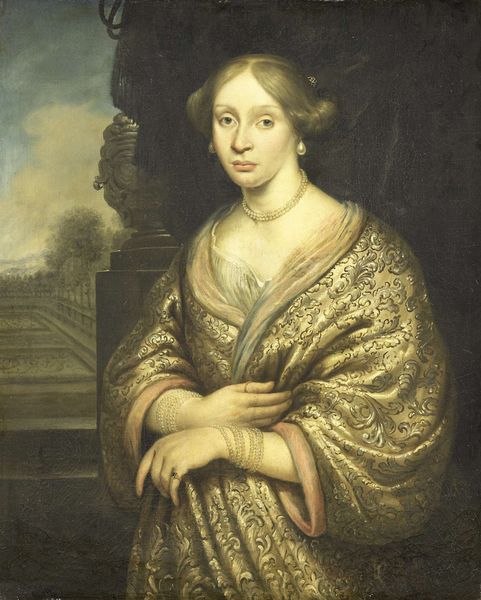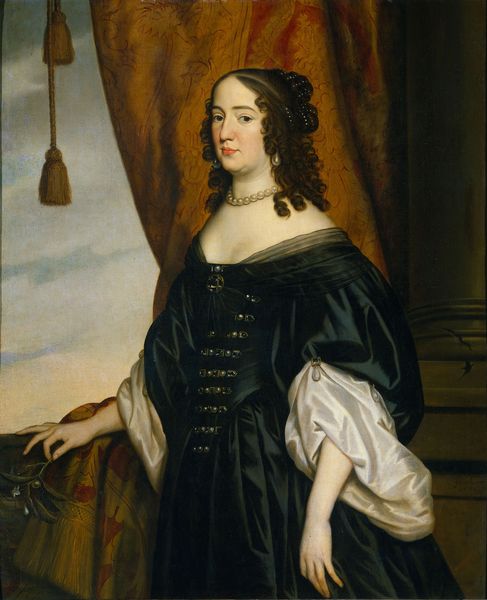
painting, oil-paint
#
portrait
#
figurative
#
baroque
#
painting
#
oil-paint
#
figuration
#
portrait drawing
#
history-painting
#
academic-art
Copyright: Public Domain: Artvee
Curator: Welcome. Here we see Lady Dacre, an oil painting attributed to Anthony van Dyck, a celebrated master of the Baroque period. Editor: My first impression is one of constrained opulence. She's draped in dark velvet, almost swallowed by it, but the pearls and that fragile rose suggest a delicate nature struggling within those rigid societal expectations. Curator: Exactly! Van Dyck rose to prominence portraying the English aristocracy. Lady Dacre, whoever she may have been, clearly understood the performative aspect of her social position. The portrait is a fascinating artifact of class and gender. It's very much of its time, yet it feels strangely modern, too. Editor: Yes, that rose is key, isn’t it? Throughout history, the rose has symbolized beauty, love, secrecy—sometimes even blood and martyrdom. Here, in Lady Dacre's seemingly casual grip, it suggests vulnerability, and perhaps a quiet rebellion against the formal strictures of court. Curator: Indeed. Her stance and gaze, though seemingly demure, have a disarming quality. We have very few official details about Lady Dacre’s biography but these lavish portraits served specific functions—they signaled power, solidified lineage, and circulated images to construct the subject's social presence. Think of it as 17th-century image management. Editor: I agree, there's something fascinating about the way van Dyck plays with symbolism. The architectural details on the left hint at power and legacy, whilst also contrasting with the rich gold fabric draping the right side, giving off the impression of theatre or drama. The viewer’s focus immediately gravitates towards Lady Dacre in her velvet attire which could be read in various ways: an embrace of high social standing, a need to present a composed, poised figure or even, conversely, a way to distance oneself, to create boundaries. Curator: The fact that her identity remained an enigma until recently makes her portrait even more poignant for a contemporary viewer. The visual rhetoric in aristocratic portraiture tells us less about an individual but provides an insight into how individuals aspired to be viewed. Van Dyck shows us the construction of social image itself. Editor: Absolutely. Looking closely at this portrait opens a window into the intricacies of identity and the silent language of symbols. It’s a glimpse into a world both distant and, in its careful performance of self, remarkably familiar. Curator: Yes, it's a reminder that art endures not only for its aesthetic beauty but also for the complex dialogues it sparks across time.
Comments
No comments
Be the first to comment and join the conversation on the ultimate creative platform.
